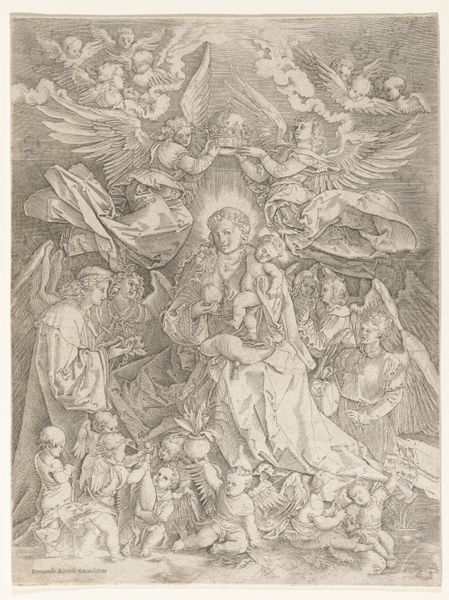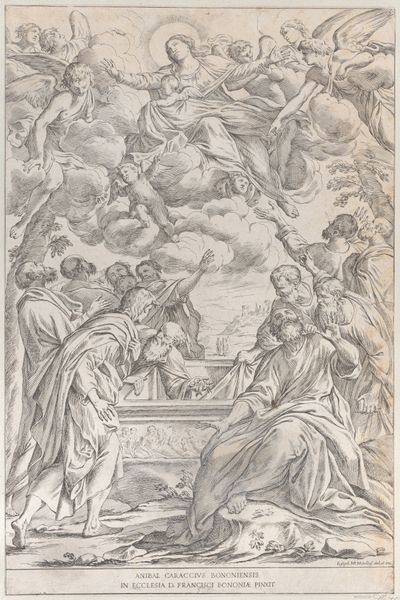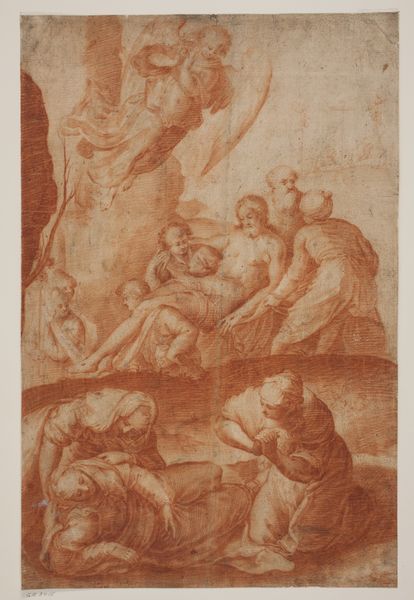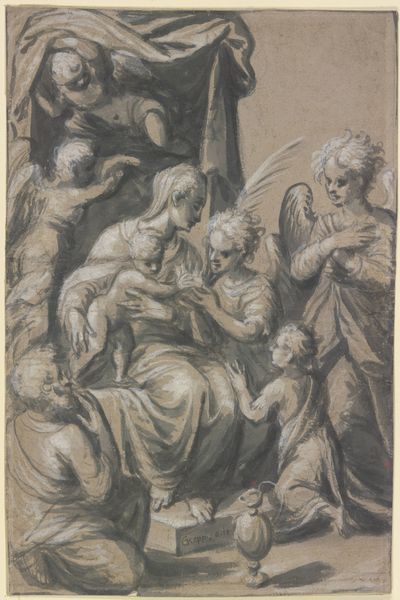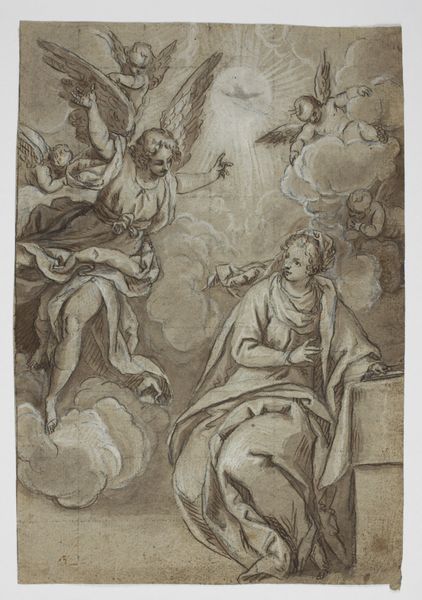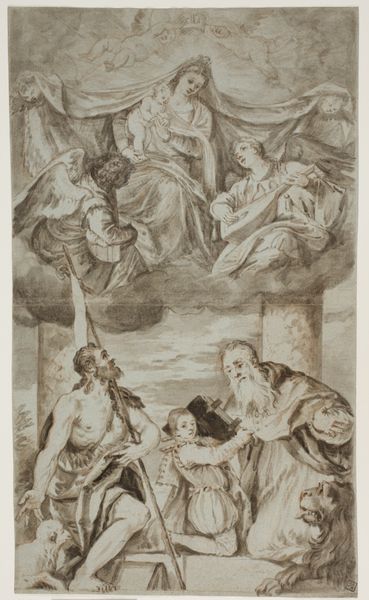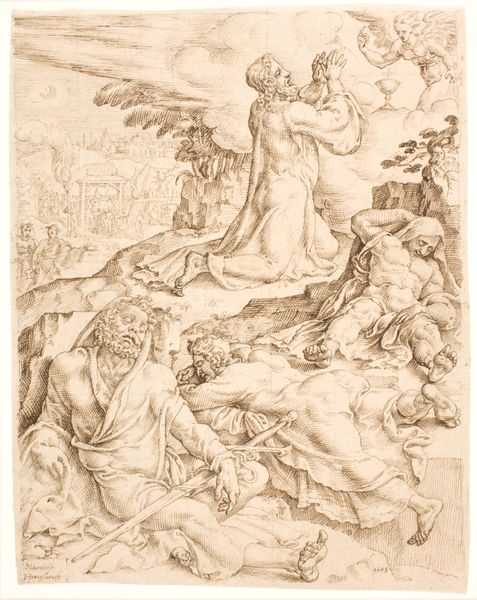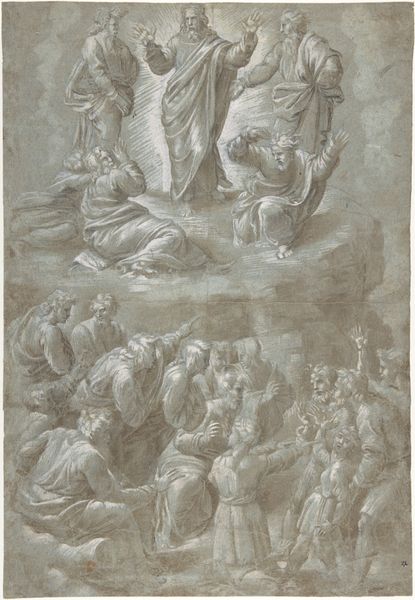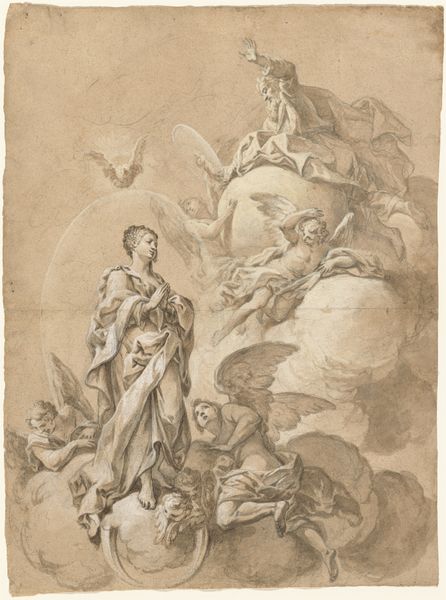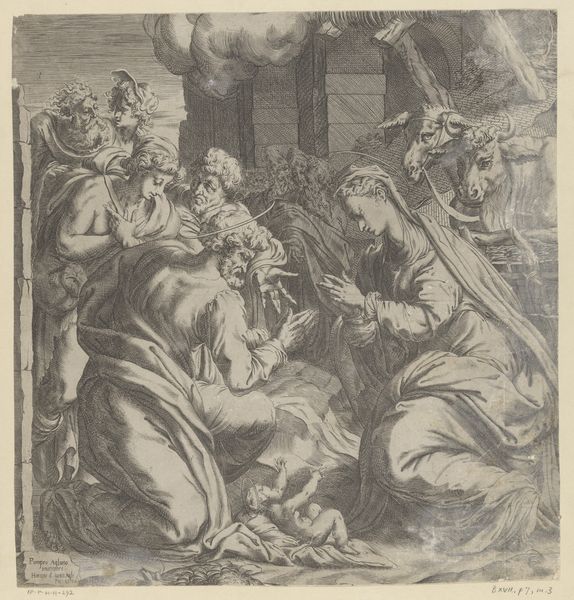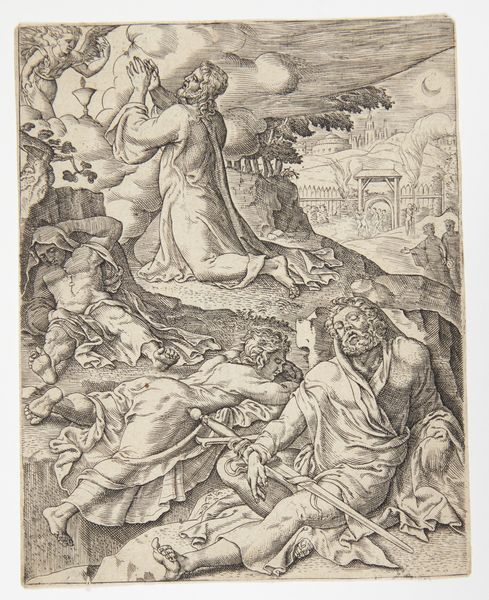
A male saint kneeling before the Christ child 1679
0:00
0:00
drawing, print, engraving
#
pencil drawn
#
drawing
#
baroque
# print
#
figuration
#
portrait drawing
#
history-painting
#
engraving
Dimensions: Sheet (Trimmed): 15 3/4 × 10 13/16 in. (40 × 27.5 cm)
Copyright: Public Domain
Curator: Here we have Carlo Antonio Forti’s engraving from 1679, titled "A Male Saint Kneeling Before the Christ Child," currently residing at the Metropolitan Museum of Art. Editor: What strikes me immediately is the dynamism captured despite its being an engraving. The swirling clouds, the figures in various states of engagement – it feels like a captured moment of divine interaction. Curator: Precisely. Engravings like these served as crucial tools for disseminating religious and historical narratives in 17th-century society. They brought theological concepts to a wider audience, shaping perceptions and reinforcing the Church's power through easily reproduced imagery. Editor: You can almost feel the texture of the paper. The fineness of the lines used to describe the robes and the flesh are fascinating. The saint's gaze is compelling; the way it directs your eye right towards the Christ Child... it’s brilliantly constructed. Curator: It reflects the prevailing Baroque sensibilities of the time. The composition, with its theatrical presentation of the saint's piety, functioned as a powerful exemplar. The architecture of religious conviction reflected and supported the hierarchies that governed everyday life. Editor: Looking closer, I notice the inscribed tablets and scrolls each of the figures bear, filled with text. Curator: Those details served to reinforce specific doctrines or biblical passages. In that way, art could serve the clear purpose of communicating ideology, but was never far away from patronage, politics and institutional purpose. Editor: Forti's skill really comes across through the effective distribution of shadow. He uses a very subtle interplay to make the scene almost shimmer. Curator: Absolutely. Understanding works like these requires appreciating not just their formal elements, but their original social and political context. Editor: Agreed. And understanding those contexts gives greater depth to those initial emotional and compositional responses. Curator: It all informs our present encounter with a piece of the past.
Comments
No comments
Be the first to comment and join the conversation on the ultimate creative platform.
